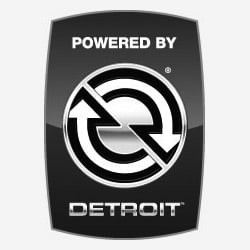Modern diesel trucks utilize Diesel Particulate Filters (DPFs) to reduce harmful emissions. A key indicator of DPF health is the regen light. Understanding what a Flashing Regen Light signifies is crucial for maintaining your truck’s performance and longevity. This article will delve into the different DPF light warnings, their meanings, and the necessary actions to take.
A DPF traps soot from the exhaust. To maintain efficiency, it requires periodic cleaning called regeneration. The regen light communicates the DPF’s status, alerting you to necessary actions. Ignoring these warnings can lead to costly repairs and decreased fuel efficiency.
DPF Light Indicators: Steady vs. Flashing
The regen light can illuminate in two ways: steady and flashing. Each indicates a different level of urgency.
Steady Regen Light: Early Warning
A steadily illuminated regen light is the first indication that your DPF is nearing its soot capacity and requires regeneration. This is not an immediate cause for concern, as you likely have several hours of driving time before performance is affected. This stage often allows for a passive regeneration.
Passive regeneration occurs automatically during highway driving. Increased exhaust temperatures, achieved at sustained speeds, burn off the accumulated soot. Some trucks also employ oxidizing catalytic converters to aid this process. If you see a steady regen light, continuing highway driving may resolve the issue.
Flashing Regen Light: Immediate Action Required
A flashing regen light signals a more urgent situation. The DPF is significantly clogged, requiring a parked regeneration. Ignoring this warning can lead to a derated engine and potential damage. If a check engine light accompanies the flashing regen light, immediate action is paramount. You may also hear an audible warning.
Parked Regeneration Steps:
- Safe Parking: Park in a safe location away from flammable materials, ensuring adequate ventilation.
- Warning Signage: Display a “Caution – Parked – DPF Regeneration in Progress” sign.
- Vehicle Preparation: Put the transmission in neutral and engage the parking brake. Cycle the parking brake (release and re-apply) and the clutch pedal (if equipped).
- Initiate Regeneration: Locate and press the designated “REGEN” button on your dashboard, holding it for the specified duration.
 Dpf regen button on a diesel truck dashboard
Dpf regen button on a diesel truck dashboard
The parked regeneration process typically takes 20-40 minutes. During this time, engine RPM will increase and you may see a High Exhaust System Temperature (HEST) light. Both are normal and should return to normal upon completion. Consult your owner’s manual for specific instructions related to your truck model.
Stop Engine Light: Critical Warning
Failure to perform necessary regenerations will eventually lead to a clogged DPF, severely impacting engine performance and potentially causing damage. A stop engine light in conjunction with DPF warnings indicates a critical situation. Immediately stop the vehicle and seek roadside assistance. Continued operation can result in costly repairs.
DPF Maintenance and Longevity
While regeneration cleans the DPF, it eventually requires manual cleaning. Refer to your owner’s manual for the recommended maintenance schedule. Adhering to these guidelines and responding promptly to DPF warnings will maximize the lifespan of your DPF, typically lasting 300,000-400,000 miles depending on the truck’s age and usage.
Conclusion
Understanding your truck’s DPF system and responding to warning lights, especially a flashing regen light, is vital for maintaining performance and avoiding costly repairs. By following the recommended procedures and performing timely maintenance, you can ensure the longevity and efficiency of your diesel engine. Regularly consult your owner’s manual for model-specific information and guidance on DPF maintenance.